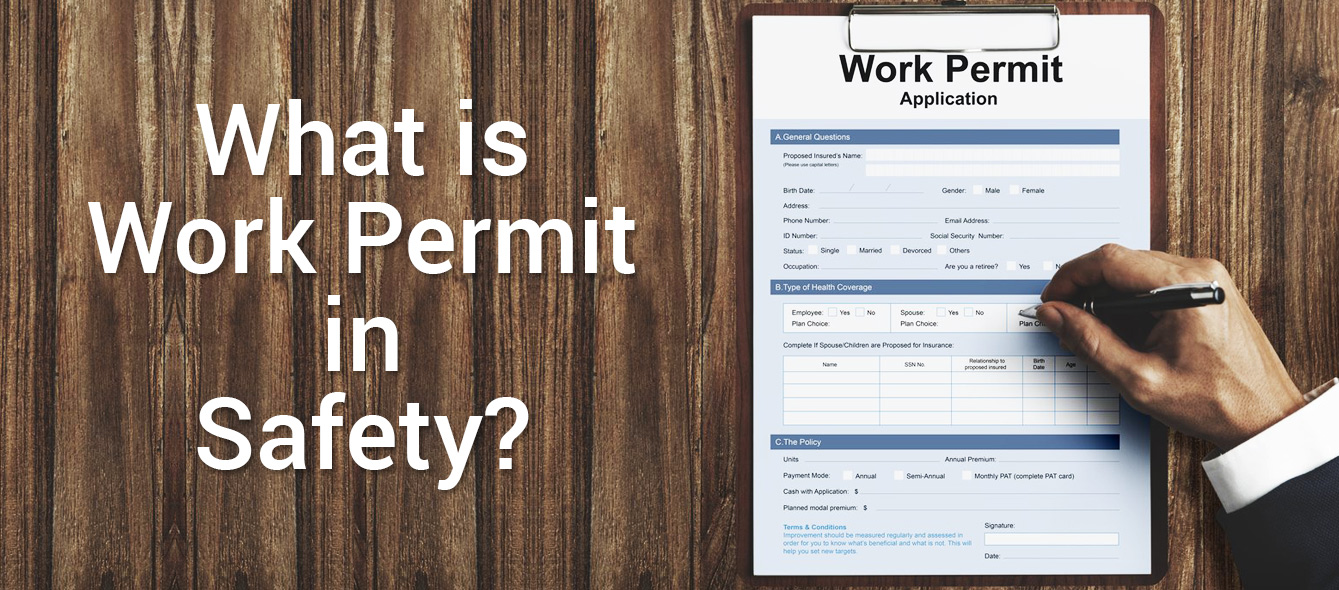
what is a Permit to Work (PTW)?

A Permit to Work (PTW) is a document management system designed to authorize and control activities that are deemed hazardous within a workplace. This systematic process ensures appropriate safety measures, which mitigate the risk of workplace incidents and accidents.
Why use a Permit to Work (PTW)?
Industrial settings have inherent hazards. Even a little accident can lead to serious impacts if not addressed properly. Every risk-related scenario poses crucial risks to the workers, property and the environment. Here is where the Permit To Work System has a prominent role.
To put it simply, the Work Permit System safety clearly outlines the necessary steps that mitigate the risk and ensure everyone is safe.
Permit to Work is a crucial element in work permit safety and safety PTW systems. This formalized system documents comprehensive safety measures before, during and after a high-risk activity.
How the Permit to Work System Works?
Request and risk assessment:
Typically, the PTW coordinator or the worker will submit a request that identifies and illustrates the scope, location, type of work, potential hazards and safety measures adopted through a PTW risk assessment.
Review and Approval:
A qualified person, like an HSE officer, will review the request and approve the permit.
Implementation and monitoring:
The task will be carried out under supervision and per relevant permit-to-work safety checkpoints.
Permit Close-out:
Once the job is completed, the permit will be verified, signed off and archived.
Note: A work permit is not required in case of routine, non-hazardous activities explicitly excluded by organizational policy.
Why use a Permit to Work (PTW)?
 General Permit
General Permit Permit To Work for confined space
Permit To Work for confined space Permit To Work for lifting operations
Permit To Work for lifting operations Permit To Work for working at height
Permit To Work for working at height Permit To Work in oil and gas industry
Permit To Work in oil and gas industry
 Hot Work Permit
Hot Work Permit Cold Work Permit
Cold Work Permit Electrical Work Permit
Electrical Work Permit Isolation Permit (Lockout/Tagout)
Isolation Permit (Lockout/Tagout) Excavation Permit
Excavation Permit
Common Permit To Work Examples:
Examples:-
Confined space
Scenario: Entering a storage tank that already contained chemicals.
A Confined Space Entry Permit is issued and controls such as rescue equipment, atmospheric testing, and a trained team with PPE and a harness are by the side.
Working at height:
Scenario: Installing solar panels on the roof of a warehouse.
Working at Height Permit is issued, and safety measures such as using full-body harnesses with lifelines, edge protection ensured, secured ladder access and warning signage in place.
Role of the PTW Coordinator
The typical responsibilities of a permit-to-work coordinator include:
 Make sure that the PTW work is in alignment with site procedures
Make sure that the PTW work is in alignment with site procedures Properly maintaining Permit documentation
Properly maintaining Permit documentation Conformity to the work permit system and guidelines
Conformity to the work permit system and guidelines
PTW Training
Permit To Work system training is a key to effectively implementing and maintaining a PTW system. PTW training ensures the participants have an understanding of:
 Issuing, reviewing and reading permits
Issuing, reviewing and reading permits Comprehend the types of permits
Comprehend the types of permits Perform permit to work training on safe practices
Perform permit to work training on safe practices Deploy PTW in safe procedures in the right way
Deploy PTW in safe procedures in the right way
Providing this training demonstrates the organization’s Permit to Work standard and fosters a robust work permit system safety culture.
Key Takeaway
Implementing the right HSE permit to work improves the safety culture of an organization. This system ensures hazardous operations are performed efficiently and safely while reducing the risk of workplace injuries, accidents and incidents.
Contact us
Permit to work is an essential element of workplace safety. Green World Group advised corporate employees to learn about issuing a permit to work and the critical role of permit to work systems in preventing workplace hazards.
Related Videos
FAQ
PTW means Permit to Work and is a tool to manage high-risk activities under safety measures.
Though the standard work permit processing time is generally 24 hours, it can probably vary based on the policy of the organization and the level of risk.
A PTW coordinator is responsible for organizing, approving, and monitoring all permits, thereby complying with safety guidelines.
It is a systematic approach to assess job hazards and recognize the control measures that mitigate risks before a permit is issued.
This essential training educates participants about the understanding of issuing, following and auditing permits. This knowledge helps to comply with work safety and legal standards.